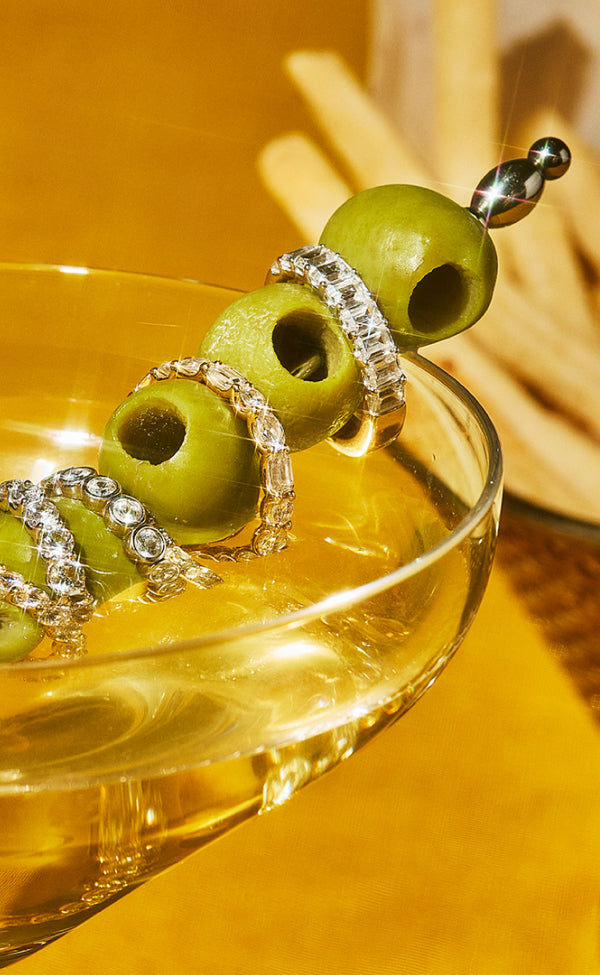WTF Are Lab-Grown Diamonds?!
TLDR:
1. Petite Frites lab-grown diamonds are created using the HPHT process in which we take a diamond seed, put it in a chamber, simulate the conditions of the earth’s core (high pressure, high temperature), and “grow” a diamond through carbon deposits.
2. Lab-grown diamonds are indistinguishable from mined diamonds—it would take high tech tests and machinery to identify any differences.
3. Mined and lab-grown diamonds are measured on the same quality scale for color and clarity.
FROM THE DESK OF OUR FOUNDERS...
We welcome you to nerd out with this 3-minute read in which we address common questions regarding lab-grown diamonds. Grab a cup of coffee, take a seat, and get ready to enrich your mind....
How can I tell if a diamond is mined versus lab grown?
Short answer - you can’t (but you’re still a genius, so don’t stress). A trained gemologist may be able to tell the difference, but not with the naked eye and extensive testing is usually required to make a definite determination. Two small differences between lab-grown and mined diamonds are 1. mined diamonds may contain traces of nitrogen that lab-grown diamonds don’t (which would make some mined diamond appear more yellow, lowering the diamond’s color grade), and 2. CVD-created diamonds do not form octahedral faces while being grown, but rather only grow with cubic faces (this can only be seen in the raw or uncut state of the diamond, before being cut and finished into something like a round brilliant).
How are lab-grown diamonds created?
There are two methods to create diamonds: Chemical Vapor Deposition (CVD) and High Pressure-High Temperature (HPHT). At Petite Frites, we use the latter. With this method, a small diamond “seed” is placed into another source of carbon (all diamonds are made up of carbon molecules), such as graphite. This is then put in a chamber and subjected to, you guessed it, both high pressure and high temperature. The carbon atoms then dissolve and form a diamond crystal around the seed. As carbon atoms continue to deposit around this diamond crystal, the diamond “grows”. This process can take several weeks or even months depending on the desired size.
Fun fact: Lab-grown diamonds don’t come out of the chamber ready to be set —like mined diamonds, they come out in a raw form and need to be cut and polished.
Refresh me… How are mined diamonds created?
Over a process that takes 100+ million years (potentially billions), mined diamonds are formed hundreds of miles deep beneath the earth’s surface under extremely high heat and high pressure that causes carbon atoms to bond. These diamonds have been brought closer to the surface by volcanic eruptions of kimberlite magma, and are mined from operating depths of 300-400 meters. The largest diamond mines are located in Russia and Botswana.
How do you determine the quality of lab-grown diamonds?
Lab-grown diamonds are measured on the same quality scale as mined diamonds which “ranks” diamonds on their color and clarity. The color grading scale ranges from D (colorless i.e., the best) to Z (light yellow or brown i.e., the worst). The clarity grading scale refers to the presence of internal flaws and ranges from FL (“flawless”, ie. the best) to I (“included”, ie. the worst).
What quality diamonds does Petite Frites use?
We use FG-VS diamonds: FG meaning “colorless” to “near-colorless”, and VS meaning internal flaws are “very slightly included” and difficult to see under 10x magnification. Basically, these are REALLY GOOD diamonds.
As always, keep the questions coming! And if this left you wanting for more, check out our Lab Grown 101 page.
Jackie (Petite) & Katie (Frites)







